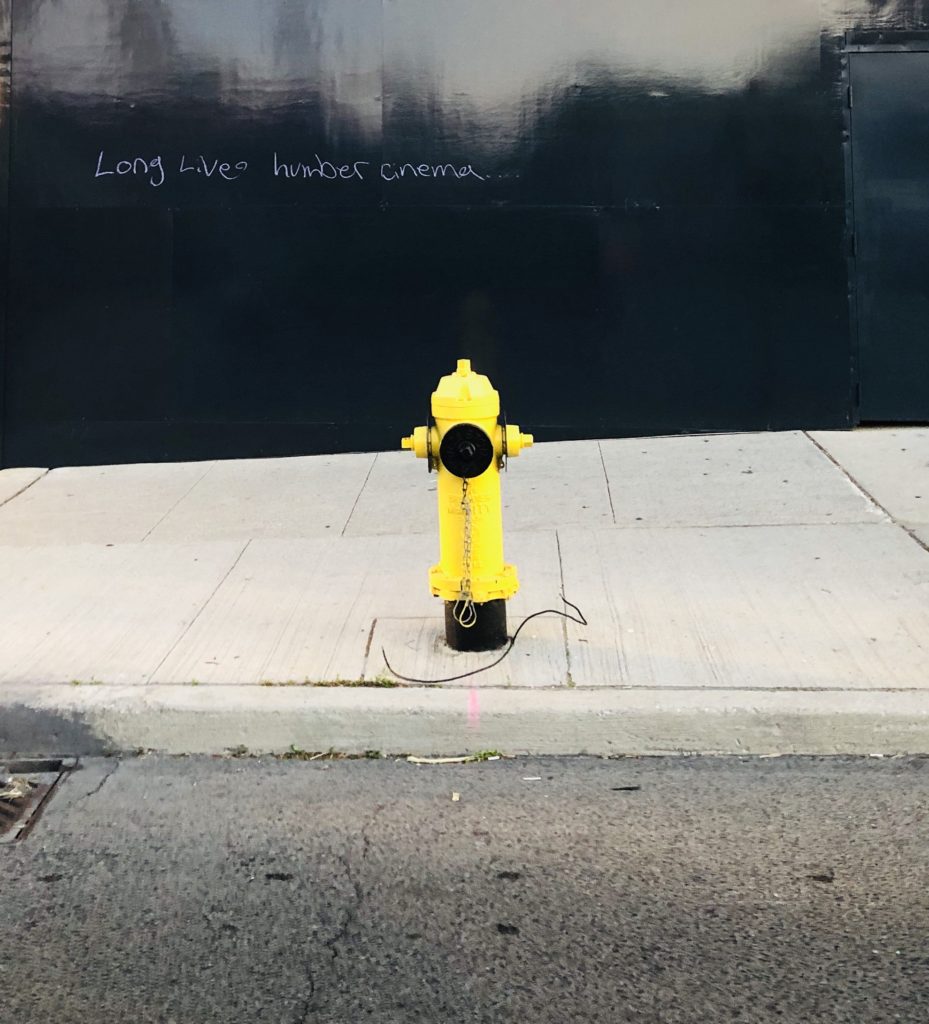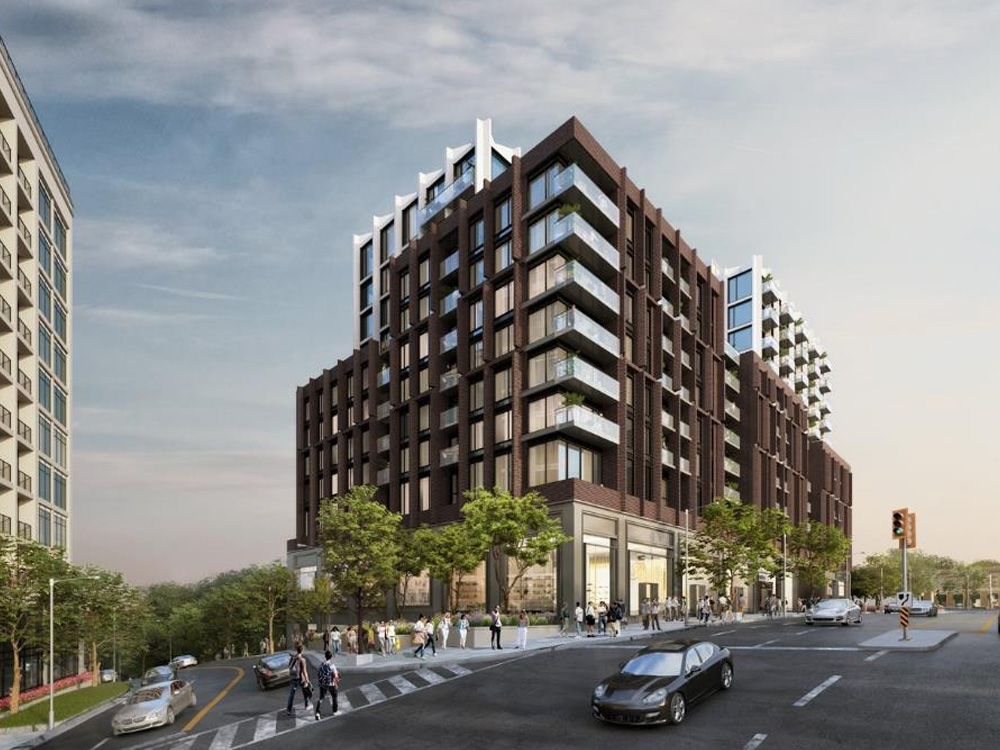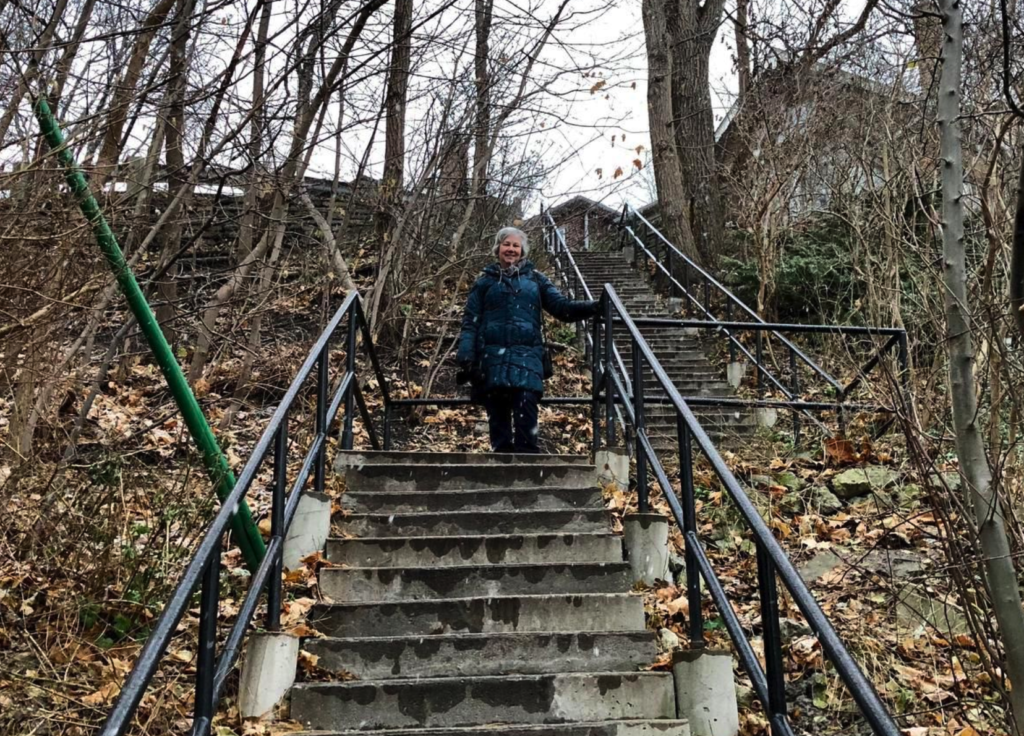A bike share station was starting to get installed today in Neil McLellan Park. Stay tuned.

A bike share station was starting to get installed today in Neil McLellan Park. Stay tuned.

It looks fairly contemporary, but the Humber Theatre was built back in 1948. Then, it was known as the Humber Odeon Theatre. On May 30, it closed forever.

According to Wikipedia, it was designed by architect Jay Isadore, originally seating 1,200 patrons in one large auditorium, which was split into upper and lower auditoriums in the 1970s. It was closed in 2003, abandoned, and re-opened by new owners in 2011, after a $350,000 renovation. According to Doug Taylor, author of Toronto’s Local Theatres of Yesteryear, operator Rui Pereira preserved the upper auditorium, but split the lower auditorium into four smaller auditoria.
We’d love to hear your stories and memories of the Humber.
On April 23, the originally scheduled Contested Hearing at LPAT (formerly OMB) on this development was converted to a Settlement Conference because the remaining two objecting Party’s had withdrawn. However, the Settlement is conditional on the City’s Transportation Services staff being satisfied the the proposed development will not generate any unacceptable traffic impacts on the immediate neighbourhood.

The key concern here is that the developer is thus far unwilling to have any restrictions placed on the size of stores that could occupy the very large 50,000 sq. ft. of commercial space that will be available. In fact, in its updated traffic study, Plazacorp has indicated that the lower level could be occupied by a mid-size supermarket which would likely generate a great deal more traffic every day than a typical mix of smaller stores. There has been no further word from City Hall on this issue since April 23, but check here for further updates.
Meanwhile, the BWVRA is pleased to report that as a result of separate consultations with City and the developer’s Landscape Architect, an attractive landscape feature / public space has been designed for the corner of Bloor Street and Riverview Gardens. This was the only other outstanding item that the BWVRA wanted addressed before this development proceeds, and our thanks are due to former Councillor Doucette and current Councillor Perks for their help in facilitating the very positive outcome.
You already know that your Bloor West Village Residents Association has been working tirelessly over the past number of years to preserve and protect the special qualities of Bloor West Village that we all value and enjoy every day. The initiatives have included successful challenges to several inappropriate over-sized development proposals, along with our continuing efforts to have effective planning controls put in place for Bloor Street through the Village.
Your Association has also hosted many highly popular all-candidate debates and Janes Walks and our website continues to record thousands of visits every year, indicating that our Bloor West Village residents really care about and want to know, what’s going on! BUT…none of this would have been possible without the many dedicated volunteers who have served on our Board of Directors to help organize the various initiatives that have made BWVRA so relevant to our community.
THE PROBLEM IS…as with any volunteer organization there is always on-going attrition, usually due to family responsibilities, career demands and relocations. Over the past year, a number of our Board Members have had to move on, leaving us with an inadequate number of Directors to carry on with our regular activities.
WE NEED YOUR HELP…and by taking on an active role with your Association you will gain a broad perspective on civic and local issues and a meaningful way to give something back to your community! To learn more about us you could go to our website at www.bwvra.ca or, better yet, give me a call at 416-762-0912!
Jamie Isbister, Chair BWVRA
* Toronto Life Survey, 2018

You’ve likely seen these new street lights on Bloor Street West in the village. They’re cool, and there’s more to them than meets the eye. For more info, click here.

The Toronto Star profiled Sarah in this exit interview, during a recent walk through the neighbourhood. Click here to read it.

Beginning this month, the Runnymede TTC Station will be under construction with the installation of new elevators and sliding doors. This will greatly improve accessibility. Construction is scheduled to end by the end of 2020. More information can be found here.
A great article in the Toronto Star about a special tree in Bloor West Village can be found here.
Last week, the Toronto Foundation and Environics released the Toronto Social Capital Study, a benchmarking report assessing the city’s social capital levels. The study employs social capital concepts (such as social trust and civic connections) to provide a useful lens on the quality of personal and community life in Toronto. The study is a worthwhile read for anyone interested in understanding how social capital varies across the population in terms of socio-demographic and geographical strata.
As outlined in the study “Social capital†is the term used to describe the vibrancy of social networks and the extent to which there is trust and reciprocity within a community and among individuals. It is the essential “lubricant†that makes it possible for societies to function, and for people to get along peacefully even when they have little in common. There is ample empirical evidence showing that high levels of such reciprocity, trust and connection are not simply “feel good†notions, but key ingredients to making communities productive, healthy and safe. “
The Social Capital Study surveyed just over 3,200 residents and measured responses on four dimensions:Â
The study results provide insight into social capital as experienced by residents across 26 neighbourhood clusters.
How is Toronto doing on social capital? Â
We might be richer than we think. Overall, the social capital level of people and communities in Toronto appears positive but this is not uniform: “Toronto, as a whole, shows relatively high levels of social capital in terms of social trust, social networks, civic connection and neighbourhood support.†The study shows that the majority of people surveyed trust other people (including those different from themselves), have a sense of belonging to their community, have family and friends they can rely on, give back to the community, and are interested in politics. An article by the Toronto Star’s social justice reporter, Laurie Monsebraaten, provides a good overview of the study and its main findings.
What are the social capital levels in our neighbourhood?
The study mapped the distribution of social capital levels across the city in 26 neighbourhood areas. Bloor West Village and several neighbourhoods east of the Humber River were grouped into one clustered neighbourhood area referred to as High Park-West-Junction-Parkdale. The High Park-West-Junction-Parkdale neighbourhood area showed social capital levels well above the city-wide average for the social capital dimensions of Civic Connection and Social Trust. Â This area was near the average on social capital levels for Social Networks and Neighbourhood Support.
We’re guessing that most residents would agree with Toronto Life’s ranking of Bloor West Village as the best neighbourhood in the city! It’s well-deserved and we are fortunate to have a number of attributes that make it so attractive and livable including:
• A vibrant main street shopping area
• Mature, stable residential streets
• Top public schools
• Walkability to all the essentials of daily life
• Excellent access to public transit, and
• An abundance of parks and other public spaces
But being fortunate doesn’t mean being entitled. These advantages cannot be taken for granted and despite the Toronto Life score, they can be threatened by:
• Inappropriate out-of-scale urban intensification
• Inadequate planning tools to guide renewal and growth
• Lack of City resources to properly maintain our parks and tree canopy, and
• Market forces and property taxes that penalize main street retailers
The good news is that we have a lot of engaged residents who can take some credit for how great our village is today! You are showing up at public meetings by the hundreds to express your concerns about inappropriate development proposals. You are challenging monster home proposals all the way to TLAB, Toronto’s appeal tribunal, and sending a message that this type of renewal is not encouraged in Bloor West Village. You are supporting the work of the BWVRA as a member and a donor when called upon. You are supporting other vital organizations such as Green 13 to ensure our tree canopy and public open spaces are protected and enhanced. And, you are shopping locally to ensure our retail main street prospers and survives as the anchor of our village.
As one of the strongest collective voices in our area, let’s keep it up! The BWVRA is always looking for energetic, committed residents to contribute their ideas and talents as members of our Board.
Do you have some time to become involved? We’d love to hear from you about your interests and how you would like to help! Please click here to learn more.
An important meeting will be taking place at which the City’s moves to limit the proposed 7-towers in the area north of nearby High Park will be outlined. Here are the details:
Thursday, November 8th, 7-9pm
Grenadier Retirement Residence (2100 Bloor Street West)
Shahrzad Davoudi, an urban designer who participated in the Character Study Working Group will outline the City’s High Park Apartment Neighbourhood Area Urban Design Guidelines and provide an update on the developers’ attempts to challenge those guidelines at the OMB.
There will be a discussion on what would be allowed under those limits, and what the community would want included in counter-proposals from the High Park Community Alliance based on the priorities and needs of local residents. Outgoing Councillor Sarah Doucette, who has been instrumental in fighting for these limits, will also attend. The meeting will be used to honour Sarah for her contributions. The newly-elected Ward 14 Councillor, Gord Perks, has also been invited to attend.